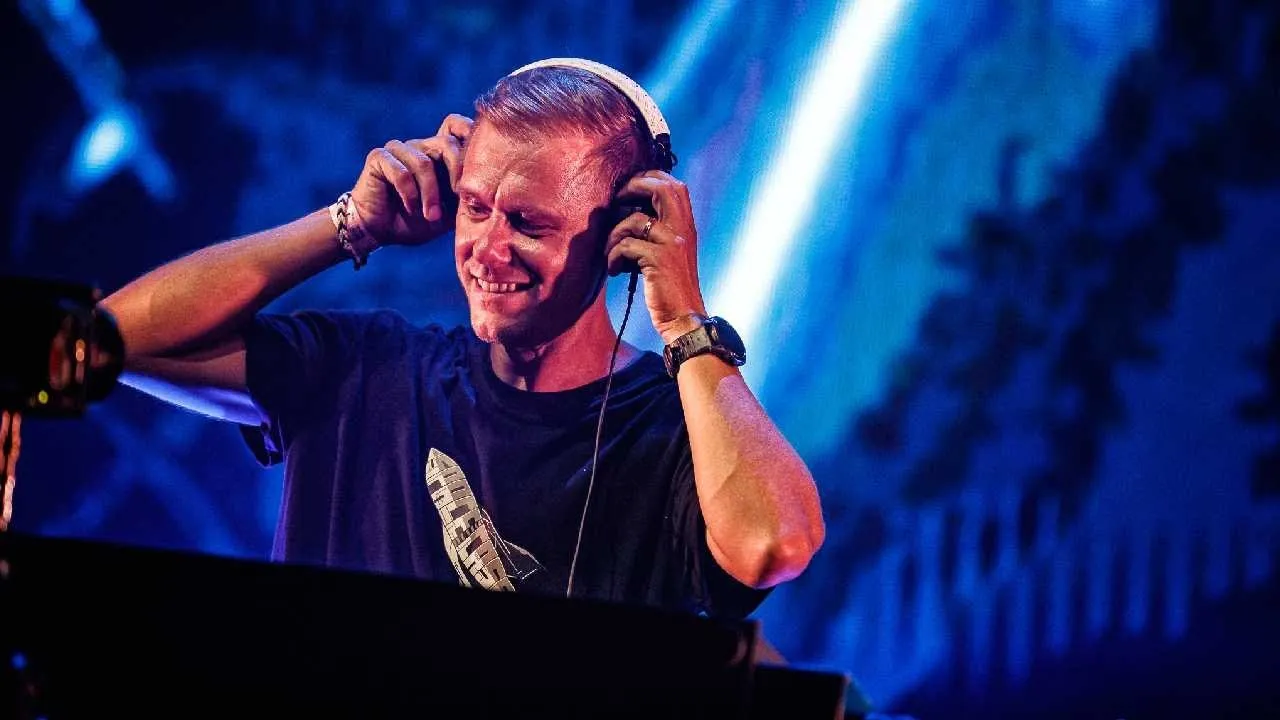

Why Armin van Buuren Chose Trance Over Other Genres: The Origins of a Genre-Defining Journey
Long before he was crowned a five-time world No. 1 DJ, Armin van Buuren was just a young man in the Netherlands with a growing obsession for synthesizers, rhythm, and emotion. While many aspiring producers of his generation gravitated toward house, techno, or hip-hop, Armin made an intentional and deeply personal choice to follow trance—a genre often misunderstood, sometimes ridiculed, but always full of emotional power.
This decision wasn’t about popularity or commercial potential. At the time, trance was niche, underground, and largely unrecognized outside of Europe. So why did Armin choose trance when other genres offered easier paths to fame?
The answer lies in emotion, escapism, structure, and identity—four pillars that would shape not only Armin’s career but the very soul of trance music as a global movement.

The Emotional DNA of Trance
For Armin van Buuren, the first and most powerful draw to trance music was emotional depth. While genres like techno and house focused on grooves and minimalism, trance offered a unique sense of narrative and catharsis. Tracks weren’t just functional—they told stories.
“I was always fascinated by music that gave me goosebumps,” Armin once said in interviews. “Trance gave me that every time.”
The genre’s signature elements—long builds, soaring melodies, ethereal pads, and emotional breakdowns—resonated with something deeper in Armin’s musical instincts. It wasn’t about the drop or the hook. It was about the journey, something he would later perfect in his sets, albums, and weekly radio show, A State of Trance.
To Armin, trance was more than a genre. It was a feeling. And for an artist deeply in tune with human emotion, it was the only choice that made sense.
Academic Precision Meets Musical Passion
Before Armin van Buuren became a full-time musician, he was a student of law and science—pursuing a degree at Leiden University. That background shaped his early approach to music in unexpected ways.
Trance appealed to his analytical side. Its structure, tempo (usually between 128-138 BPM), and progression had a logical elegance. Tracks often followed a sequence—intro, build-up, breakdown, climax, outro—that mirrored classical composition or mathematical balance. For someone like Armin, who thrived on both emotional connection and technical discipline, trance struck the perfect harmony between brain and heart.
While house and techno were more loop-driven and minimal, trance allowed for complexity and storytelling, which suited Armin’s dual identity as a thinker and creator.
Early Influences and the Dutch Trance Scene
Growing up in the Netherlands in the late ’80s and early ’90s, Armin was surrounded by a thriving electronic music culture. The Dutch trance scene was already producing legends like Ferry Corsten, Tiësto, and Rank 1.
But it was Jean-Michel Jarre and Ben Liebrand—both known for their melodic and futuristic approaches—who first opened Armin’s ears to the possibilities of electronic music. Inspired by their intricate compositions and space-age soundscapes, young Armin began experimenting with synths and software in his bedroom studio.
He was also an avid fan of German trance pioneers like Paul van Dyk and Cosmic Gate, whose emotionally charged tracks shaped the contours of what trance could become.
These early heroes weren’t chasing fame. They were building sound-worlds. And that fascinated Armin.
Trance as Escapism
In the early 1990s, electronic music was still considered countercultural. It wasn’t played on mainstream radio. It didn’t get Grammys. But it had something else: freedom.
For Armin, trance represented a form of escapism—not just for listeners, but for the artist as well. Its cinematic scope allowed him to express ideas and emotions that words couldn’t capture. Through music, he could transport himself—and others—into entirely new emotional landscapes.
This sense of escape became a core principle of his philosophy as a DJ. Every set he played, every track he produced, had to take the listener somewhere else. Whether it was a beach in Ibiza or a dark club in Amsterdam, the goal was the same: transcend reality.
In that regard, trance was not just a genre. It was a form of meditation, and Armin, knowingly or not, became one of its first spiritual guides.
Why Not House, Techno, or Pop?
At various points in his career, Armin could have pivoted. He had the talent and connections to dominate almost any genre. But he stayed loyal to trance—not because it was profitable, but because it was personal.
Unlike techno, which Armin respected but found emotionally sparse, or house, which leaned more toward groove than melody, trance gave him room to breathe, build, and break down. Pop music, while accessible, didn’t offer the same depth or duration for musical storytelling.
Even when Armin dabbled in other styles—collaborating with pop stars or experimenting with tech influences—he always returned to trance as his creative home.
And that loyalty paid off. By staying true to trance, he didn’t just ride a wave—he became the wave.

Building A State of Trance: The Global Trance Embassy
When Armin launched A State of Trance (ASOT) in 2001, his goal was simple: share the music he loved with others. But ASOT became much more than a radio show. It became the beating heart of the global trance community.
Week after week, Armin showcased new artists, celebrated old classics, and curated sound journeys that resonated with millions. Through ASOT, he effectively created a global embassy for trance, transcending borders, languages, and cultures.
This platform also affirmed his commitment to the genre. While other DJs chased trends, Armin built a movement—one that still pulses through festivals, clubs, and headphones today.
Conclusion: A Choice That Defined a Generation
In a world of constant reinvention and musical fashion, Armin van Buuren’s decision to embrace trance instead of chasing mainstream genres is both rare and admirable. It was not just a stylistic preference—it was an emotional, intellectual, and spiritual alignment.
Trance spoke to who he was at his core: a storyteller, a technician, a dreamer, and a seeker. And in choosing trance, Armin didn’t just find his voice—he gave voice to millions.
Today, with over two decades of global influence, chart-topping records, and genre-defining performances, the answer to why Armin chose trance isn’t just about sound. It’s about identity, authenticity, and purpose.
And in a music industry that often rewards compromise, Armin van Buuren’s unwavering devotion to trance remains his most powerful track of all.


















